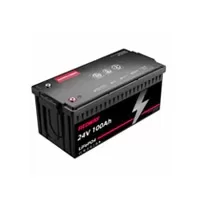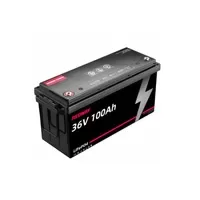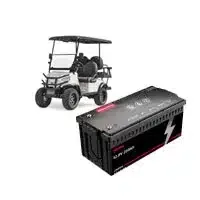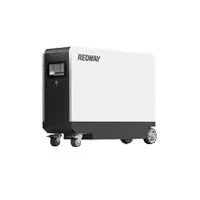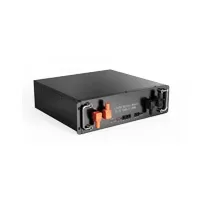Powering your appliances and electronics while off-grid or during a power outage requires the right combination of batteries and inverters. But with so many options available, it can be overwhelming to determine which battery capacity is suitable for your 2000w inverter. Will a 200Ah battery do the trick? In this blog post, we’ll dive into the world of batteries and inverters to help you understand their relationship and find the perfect match for seamless power supply. Get ready to unlock the secrets behind powering up with confidence!
Understanding Batteries and Inverters
Understanding Batteries and Inverters
When it comes to powering your devices, batteries and inverters play a crucial role. Let’s start by understanding the basics.
Batteries are energy storage devices that store electrical energy in chemical form. They come in various sizes and capacities, measured in ampere-hours (Ah). The capacity of a battery determines how long it can provide power before needing to be recharged.
On the other hand, an inverter is responsible for converting DC (direct current) power from the battery into AC (alternating current) power that can be used to run your appliances and electronics. It acts as a bridge between the battery and your devices.
Now that we have a basic understanding of batteries and inverters, let’s explore how their power capabilities are intertwined.
Calculating Power Needs for an Inverter
Calculating Power Needs for an Inverter
When it comes to choosing the right inverter for your needs, one of the most crucial factors to consider is calculating your power requirements accurately. This will ensure that you have enough wattage to run all your desired devices and appliances without any issues.
To calculate your power needs, start by listing all the electrical devices and appliances you plan on using with your inverter. Take note of their power ratings, usually measured in watts or kilowatts. Don’t forget about any additional equipment like chargers or converters that might be necessary.
Next, determine how long each device will be running during a typical usage period. This could vary depending on individual preferences and circumstances. Some devices may only need to run for a few minutes at a time, while others might need continuous power throughout the day.
Once you have this information gathered, multiply the wattage of each device by its estimated usage time. Add up these values to get your total watt-hour (Wh) requirement per day. Keep in mind that if you’re planning on running multiple devices simultaneously, you’ll need to factor in their combined wattages as well.
Remember that inverters are not 100% efficient; they consume some power themselves during operation. It’s recommended to include an additional 10-20% buffer when calculating your overall power needs to account for this inefficiency and prevent overloading the system.
By taking these steps and accurately calculating your power requirements, you can confidently choose an inverter that matches both your energy demands and budget constraints.
The Relationship Between Battery Capacity and Inverter Size
The Relationship Between Battery Capacity and Inverter Size
When it comes to powering your devices with an inverter, understanding the relationship between battery capacity and inverter size is crucial. The capacity of a battery is measured in ampere-hours (Ah), which refers to the amount of charge it can deliver over a specified period of time.
On the other hand, the size of an inverter is determined by its power output, typically measured in watts (W). To determine if a 200Ah battery can run a 2000W inverter, you need to consider both factors.
To ensure compatibility, it’s important to calculate your power needs accurately. Start by listing all the devices you plan to connect to your inverter and their respective power requirements. Add up these values to get a total wattage estimate.
Next, consider how long you want your devices to run on battery power. Multiply the total wattage by this runtime duration. This will give you an estimate of the energy needed from your battery.
Now comes the critical part: comparing this energy requirement with your battery’s capacity. If your estimated energy exceeds your battery’s Ah rating significantly, there may be insufficient juice for sustained operation.
It’s important not only to match or exceed your required wattage but also take into account potential inefficiencies due to voltage conversions and losses inherent in any electrical system.
Additionally, keep in mind that batteries degrade over time and lose capacity as they age. It’s wise always to leave some headroom when choosing an appropriate-sized battery for optimal performance throughout its lifecycle.
Finding harmony between your chosen battery capacity and desired inverter size requires careful consideration of various factors such as device power requirements, energy consumption estimates, conversion efficiencies, and future degradation possibilities.
Factors to Consider When Choosing a Battery for Your Inverter
Factors to Consider When Choosing a Battery for Your Inverter
Choosing the right battery for your inverter is crucial to ensure optimal performance and efficiency. Here are some key factors to consider when making this important decision.
1. Capacity: The capacity of a battery is measured in ampere-hours (Ah), which indicates how much energy it can store. To determine the appropriate capacity for your 2000w inverter, you need to consider both the power requirements of your devices and the duration you want them to run on battery power.
2. Voltage: It’s important to match the voltage of your battery with that of your inverter. Most inverters operate at either 12V or 24V, so make sure you choose a battery with a compatible voltage rating.
3. Type of Battery: There are different types of batteries available, including lead-acid and lithium-ion batteries. Lead-acid batteries are more affordable but have lower energy density and shorter lifespan compared to lithium-ion batteries, which tend to be more expensive but offer higher efficiency and longer lifespan.
4. Depth of Discharge: Some batteries can only discharge up to a certain percentage before their performance starts declining rapidly. Make sure you choose a battery that allows deep cycling if you require prolonged usage during power outages.
5. Charging Efficiency: Consider how efficiently the chosen battery charges from various sources such as solar panels or generators, as this will impact its overall functionality.
6.
Maintenance Requirements: Different types of batteries may have varying maintenance needs such as regular water topping-up for lead-acid batteries or periodic balancing for lithium-ion ones.’
By carefully considering these factors, you can select a suitable battery that matches both your power requirements and budget while ensuring long-lasting performance for your inverter system
Case Study: Testing a 200Ah Battery with a 2000w Inverter
Case Study: Testing a 200Ah Battery with a 2000w Inverter
Let’s dive deeper into the practical aspect of using a 200Ah battery with a 2000w inverter. While it may seem like a perfect match on paper, real-world testing can reveal unexpected results.
In our case study, we put this combination to the test to see how well they work together. We connected the battery to the inverter and started running various appliances. Initially, everything seemed fine as the inverter powered up without any issues.
However, as we increased the load by adding more power-hungry devices, such as air conditioners and high-wattage kitchen appliances, we noticed some limitations. The voltage began to drop gradually over time, resulting in decreased performance from the inverter.
To overcome this issue and maintain optimal functionality, it became apparent that we needed additional batteries or an upgrade to higher capacity ones. This highlights an important factor when choosing batteries for your inverters – always consider your power needs and ensure you have enough capacity to support them.
It’s worth noting that factors like ambient temperature and aging of batteries can also affect their overall performance. So if you’re planning on using this combination for an extended period or under challenging conditions, it’s essential to monitor and manage these variables accordingly.
Stay tuned for our next blog post where we share valuable tips on maximizing efficiency with your battery-inverter setup!
Tips for Maximizing the Efficiency of Your Battery and Inverter
Tips for Maximizing the Efficiency of Your Battery and Inverter:
1. Choose the right battery: When selecting a battery for your inverter, opt for one with a higher capacity than what you actually need. This will ensure that it can handle the power demands without draining too quickly.
2. Optimize charging: Make sure to charge your battery fully before using it with the inverter. Regularly check the voltage levels and recharge as needed to maintain optimal performance.
3. Minimize power usage: Take steps to reduce unnecessary power consumption by turning off appliances or devices when not in use. Consider investing in energy-efficient appliances to further minimize energy wastage.
4. Avoid overloading: Be mindful of the power limits of both your battery and inverter. Overloading them could lead to inefficiency and potential damage.
5. Keep batteries cool: High temperatures can affect battery performance, so try to keep them in a cool environment whenever possible.
6. Maintain cleanliness: Ensure that both your battery terminals and inverter connections are clean and free from corrosion or debris, as this can hinder efficiency.
7. Regular maintenance checks: Schedule regular inspections of your battery and inverter system to identify any issues early on and address them promptly.
By following these tips, you can maximize the efficiency of your battery and inverter setup, ensuring reliable power supply when you need it most!
Conclusion
Conclusion
In this article, we have explored the relationship between battery capacity and inverter size and answered the question of whether a 200Ah battery can run a 2000w inverter. We have learned that while it is technically possible to connect these two components together, there are several factors to consider before doing so.
Calculating your power needs is crucial when determining if your chosen battery can handle the load of your inverter. It’s important to estimate how much power you will be drawing from the inverter and for how long. This will help you choose a battery with an appropriate capacity.
Understanding the capabilities of both batteries and inverters is essential. Batteries have limits on how much current they can deliver continuously, known as their amp-hour (Ah) rating. Inverters also have limitations on how much power they can output continuously, measured in watts (W). Matching these ratings ensures optimal performance.
Efficiency plays a key role in maximizing the lifespan of your batteries and maintaining smooth operation of your inverters. Taking steps such as using high-quality cables, optimizing charging methods, and avoiding deep discharges can significantly improve overall efficiency.
It’s worth mentioning that individual circumstances may vary when it comes to choosing the right battery for an inverter. The specific requirements of your setup—such as expected usage time or power demands—should be carefully considered alongside manufacturer recommendations.
Remember that selecting compatible components for your system helps ensure reliability and longevity while preventing potential damage or failure. Consulting with experts or seeking professional guidance during this process can provide valuable insights tailored to your unique needs.
So next time you’re considering pairing a 200Ah battery with a 2000w inverter—or any other combination—it’s essential to perform proper calculations based on estimated power needs and take into account all relevant factors discussed here.
By understanding these dynamics and making informed choices about batteries and inverters suitable for your specific requirements, you can optimize the performance and efficiency of your power system



